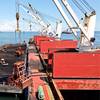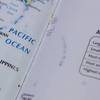OP/ED: e-logs & Saas to Transform Marine Recordkeeping
The USCG has poised e-logs and SaaS to transform U.S.-flagged shipboard recordkeeping.
By Dean Shoultz, CTO, MarineCFO
The United States Coast Guard frequently appears behind the times when it comes to rulemaking involving shipboard technological advances. Often, by the time the USCG has a Final Rule approved for publication in the Code of Federal Regulations, the technology which that Final Rule was expected to address has been superseded by a newer form of technology. Not so, however, with electronic recordkeeping (e-logbooks) and Software as a Service (SaaS).
Currently the USCG offers the “Official Logbook 706-B” in manual form free of charge to any marine operator who requests one. The 706-B is the basic pen & ink ship’s log. The USCG also generally accepts “homegrown” formatted or commercially published logbooks so long as the master, mates, and engineers are making entries in an appropriate fashion. There are other commercially available pen & ink logbooks, GMDSS, Oil Record Book, Garbage Log, and Cargo Log which the USCG also accepts for inspection and logging purposes.
Many in the towing industry have followed the progress of Sub-Chapter M since 2004 and especially since the Notice of Proposed Rulemaking (NPRM) was published in August, 2011. Few maritime observers have, however, come to appreciate the impact the NPRM will likely have on other Sub-Chapters which regulate the balance of U.S.-flagged vessels. While there are expected to be differences between the Sub-Chapter M NPRM and the Sub-Chapter M Final Rule an item that has received little attention will likely remain in the Final Rule as it was published in the NPRM.
The USCG has defined a Towing Vessel Record as, “a book, notebook, or electronic record used to document events required by this subchapter”. Of course, a Towing Vessel Record is nothing more than a vessel logbook for proscribed commercial and statutory entries. Uniquely, the Sub-M NPRM and, undoubtedly, the Sub-M Final Rule allow for the use of an “electronic record” to meet those same statutory recordkeeping requirements onboard. So, with the publication of the Sub-M Final Rule, the towing industry will have overnight a benefit that Sub-Chapters I, K, P, T and others are currently denied, the authorization to utilize onboard electronic recordkeeping as a primary means of the daily log functions. Clearly the USCG was forward thinking when this specific language was drafted into the Sub-M NPRM language and they should be applauded for their foresight. Although it is not enough that only one segment of U.S.-flagged vessels will enjoy the opportunity to tackle the overwhelming burden of recordkeeping with the assistance of software based solutions, it is reassuring that the USCG has introduced such a measure into rulemaking which likely will follow throughout the other Sub-Chapters.
istorically the USCG has provided for the overall regulatory framework for shipboard recordkeeping in the Code of Federal Regulations, various NVICs, and Commandant Instructions but has left to the marine industry the development of detailed means of how to accomplish the marine operators’ regulatory and commercial recordkeeping requirements. Now, with the Sub-M language, a vast and loosely regulated environment will exist for onboard electronic recordkeeping solutions.
Software as a Service, or SaaS, was just emerging into the general software market in 2004 when Congress adopted the legislation that would become Sub-Chapter M. SaaS is a remote web, or cloud-based, solution that reduces IT costs to the end user by contracting the deployment, maintenance, and technical support of a software solution to the software developer. Since the introduction of SaaS thousands of firms have made the transition to high cost, high maintenance software solutions to the lower cost SaaS solutions. Although the domestic marine industry has been reluctant to adopt the SaaS transition due to longstanding regulatory recordkeeping constraints the impetus of the Sub-Chapter M rulemaking opens the SaaS door to the largest segment of the U.S. domestic fleet in terms of number of vessels and marine operators.
The opportunity for marine operators to streamline their entire shipboard and shoreside recordkeeping processes into a single coherent electronic solution without having to bear the ongoing expense for sophisticated computer and communications hardware or permanent IT staff has become an unintended result of the USCG’s Sub-M rulemaking. Throughout the rulemaking USCG encouraged marine service providers, in this case marine software firms, to create easily implemented, affordable, and scalable solutions to support the Sub-M transition. Key players in the marine software sector took the challenge to heart and the result has created a market responsive beyond just the mere Sub-M electronic recordkeeping requirements but the prospect of transforming how business is conducted by marine operators through SaaS.
Although the savings and efficiencies created by e-logbooks and SaaS are enticing, caution should be exercised by marine operators interested in engaging software firms offering these solutions.
First, there are serious security issues related to the storage of regulatory and commercial electronic data that would make the consideration of any foreign marine software provider near to impossible.
Second, a qualified marine software provider should be well-versed in the details, not only of United States regulatory marine recordkeeping, but also those commercial & business recordkeeping requirements that impact a marine operator’s internal and external business relationships.
Third, reputable firms located in the United States with verifiable financial capacity, sufficient successful marine software deployments, advanced software support systems, and staffs which include U.S. licensed deck officers, marine engineers, or former USCG officers should be preferred over out of country software providers.
Fourth, and most importantly, a marine operator is best advised to select a software partner firm which is experienced and sensitive to the onboard dynamics created by the shifting from “old school” techniques to electronic recordkeeping. Fortunately the astute marine operator need look only to Texas, Louisiana, Georgia, New York, Maryland, or California to find marine software providers experienced in e-logbooks and SaaS.
The USCG seems to have gotten ahead of the technology curve on the Sub-M rulemaking but the effort won’t be complete until all U.S-flagged vessels have the same benefit. It is a good start.












